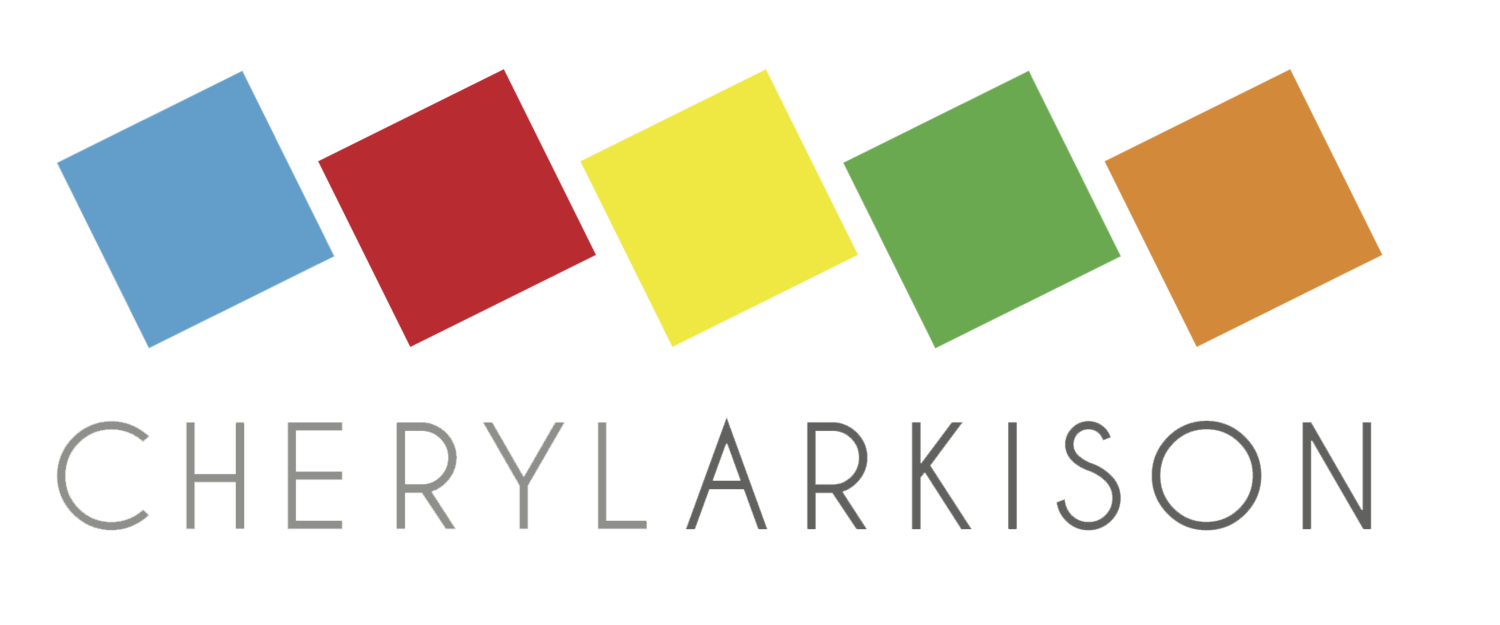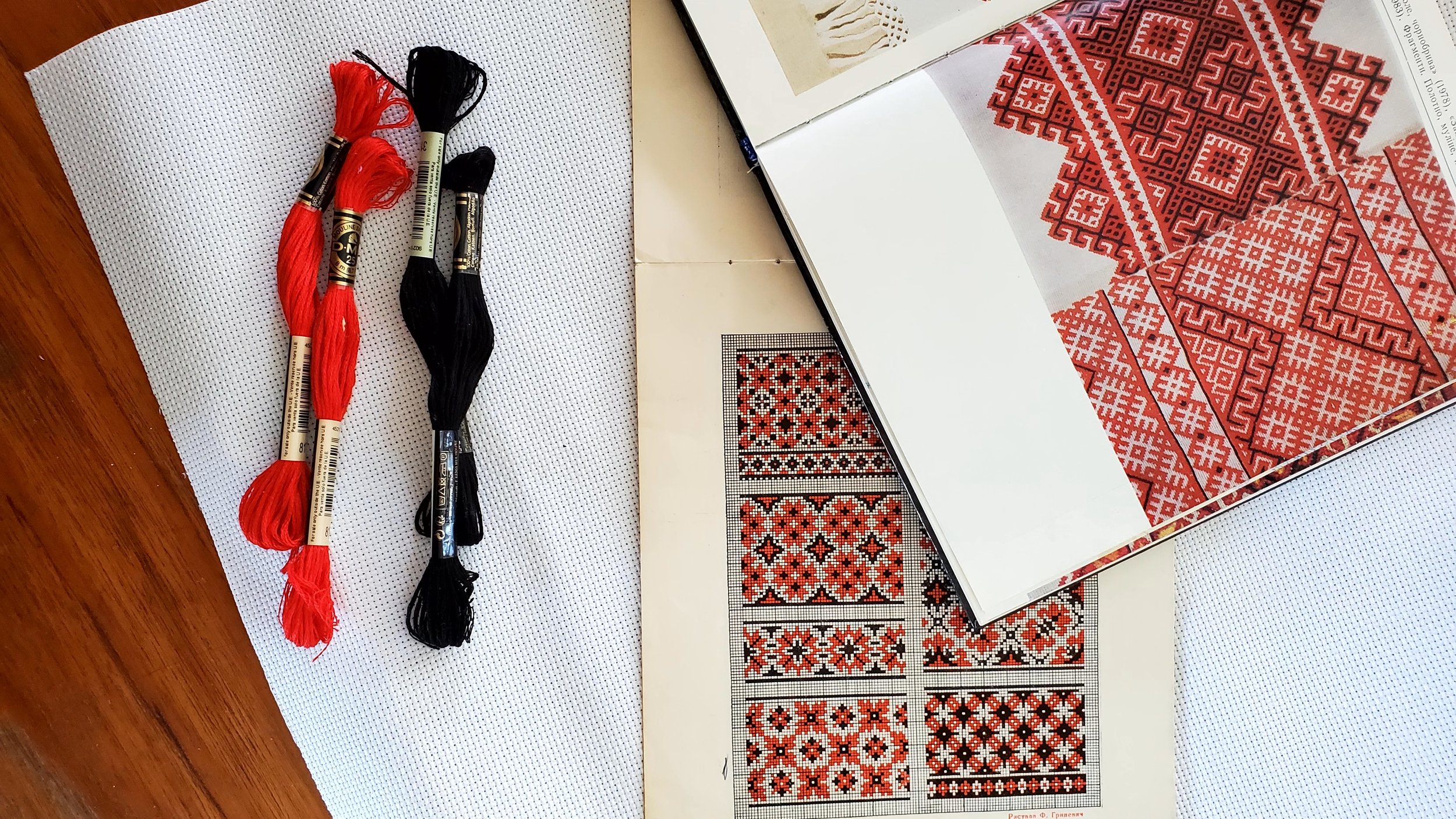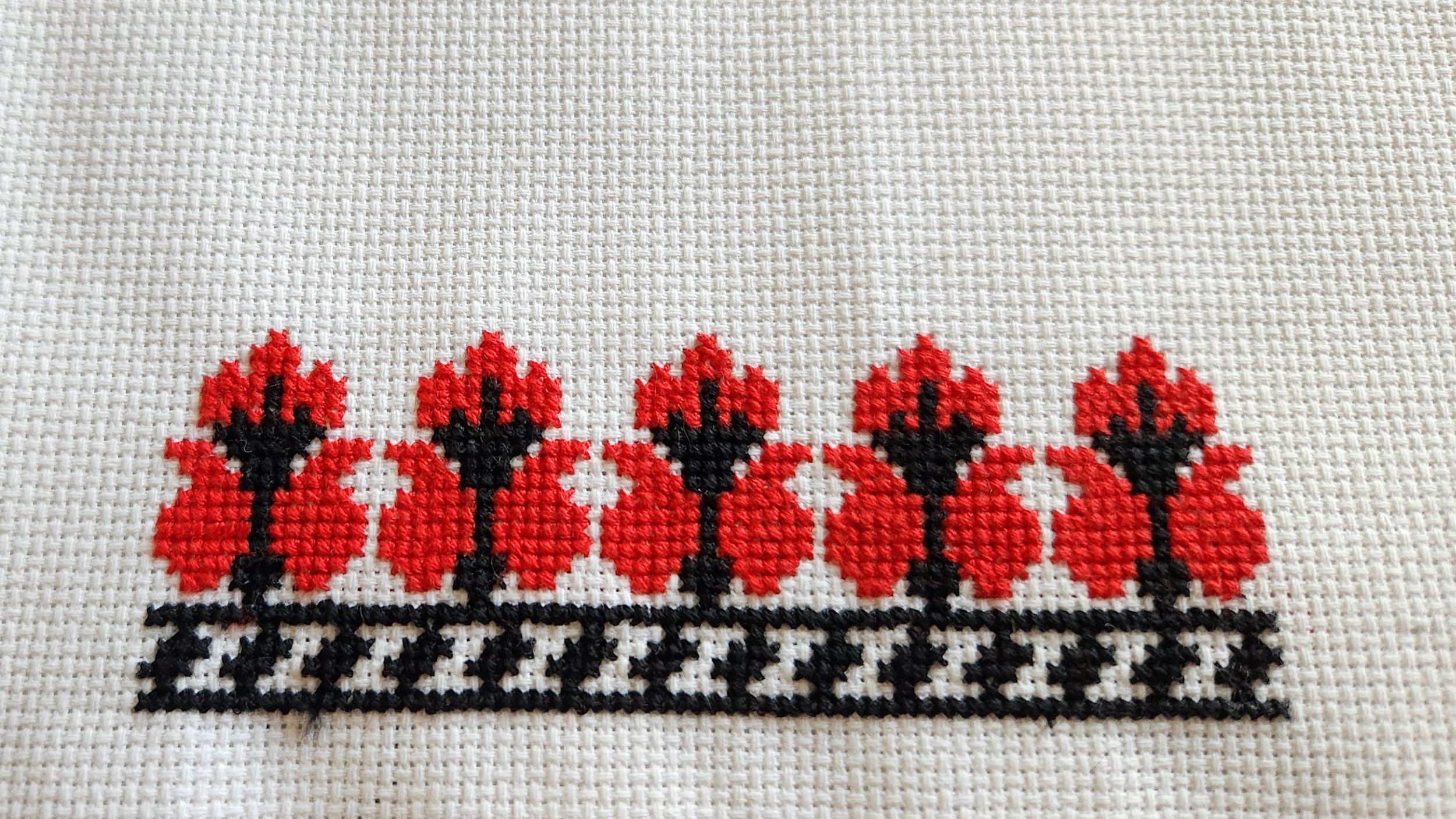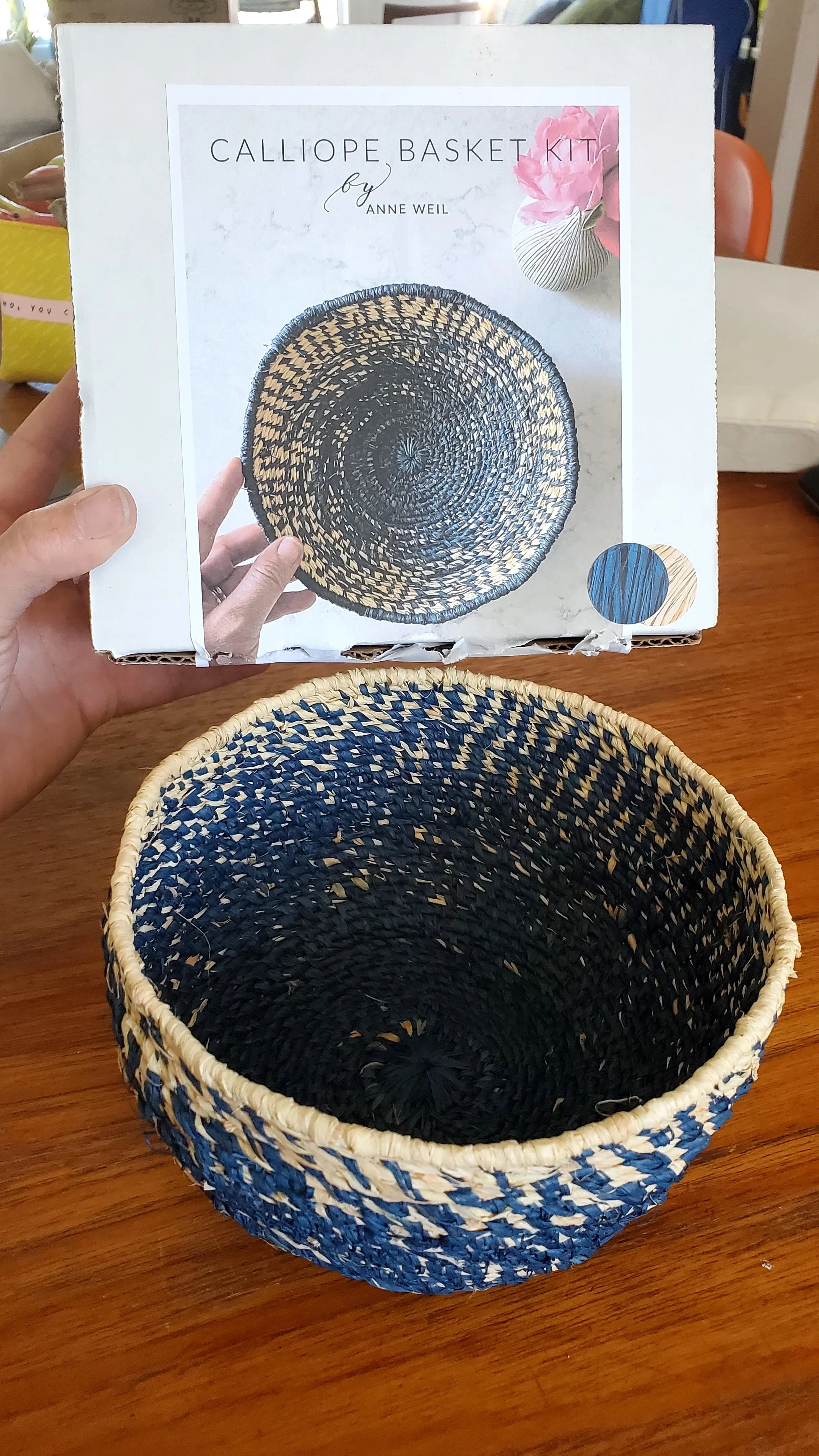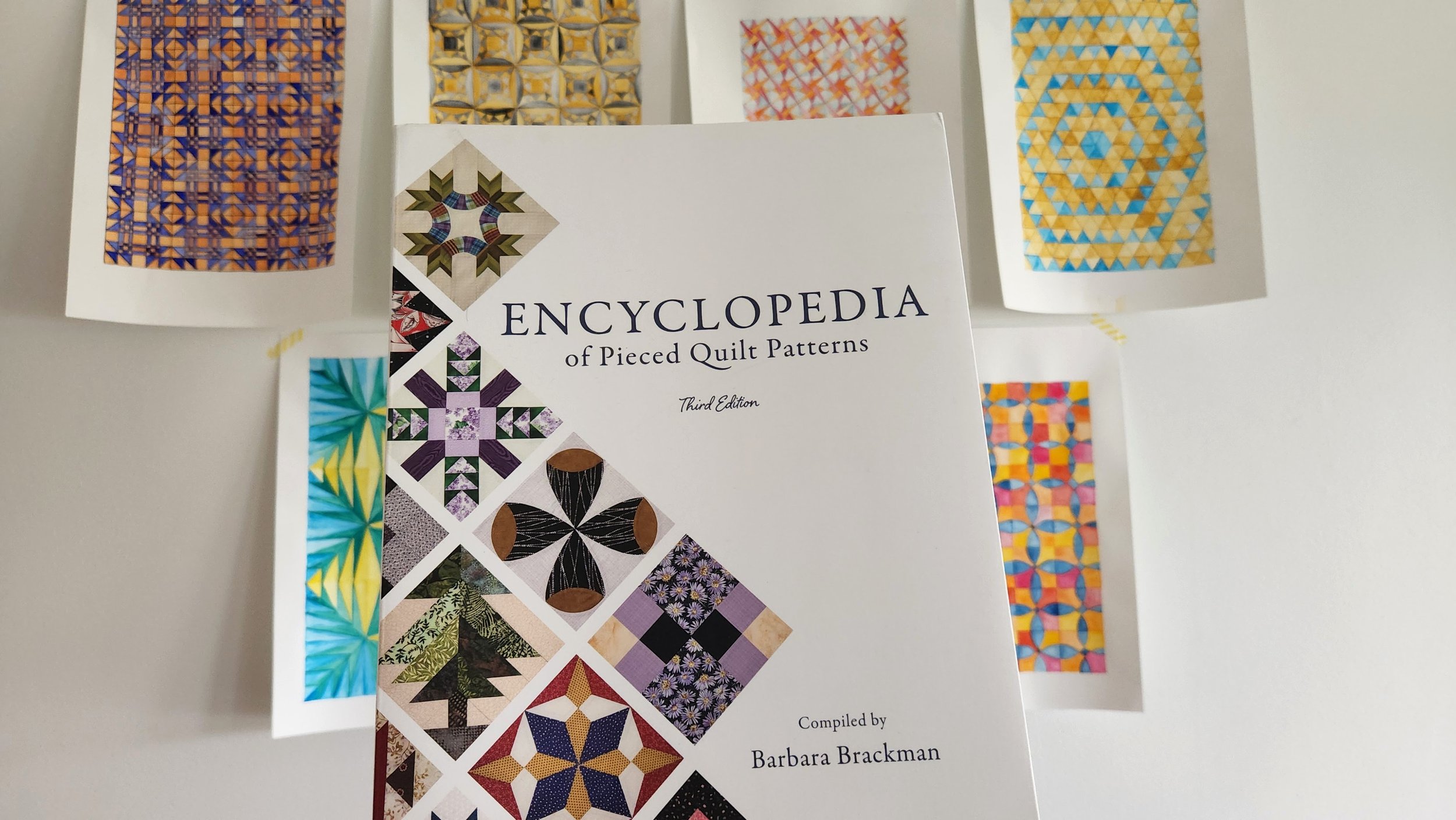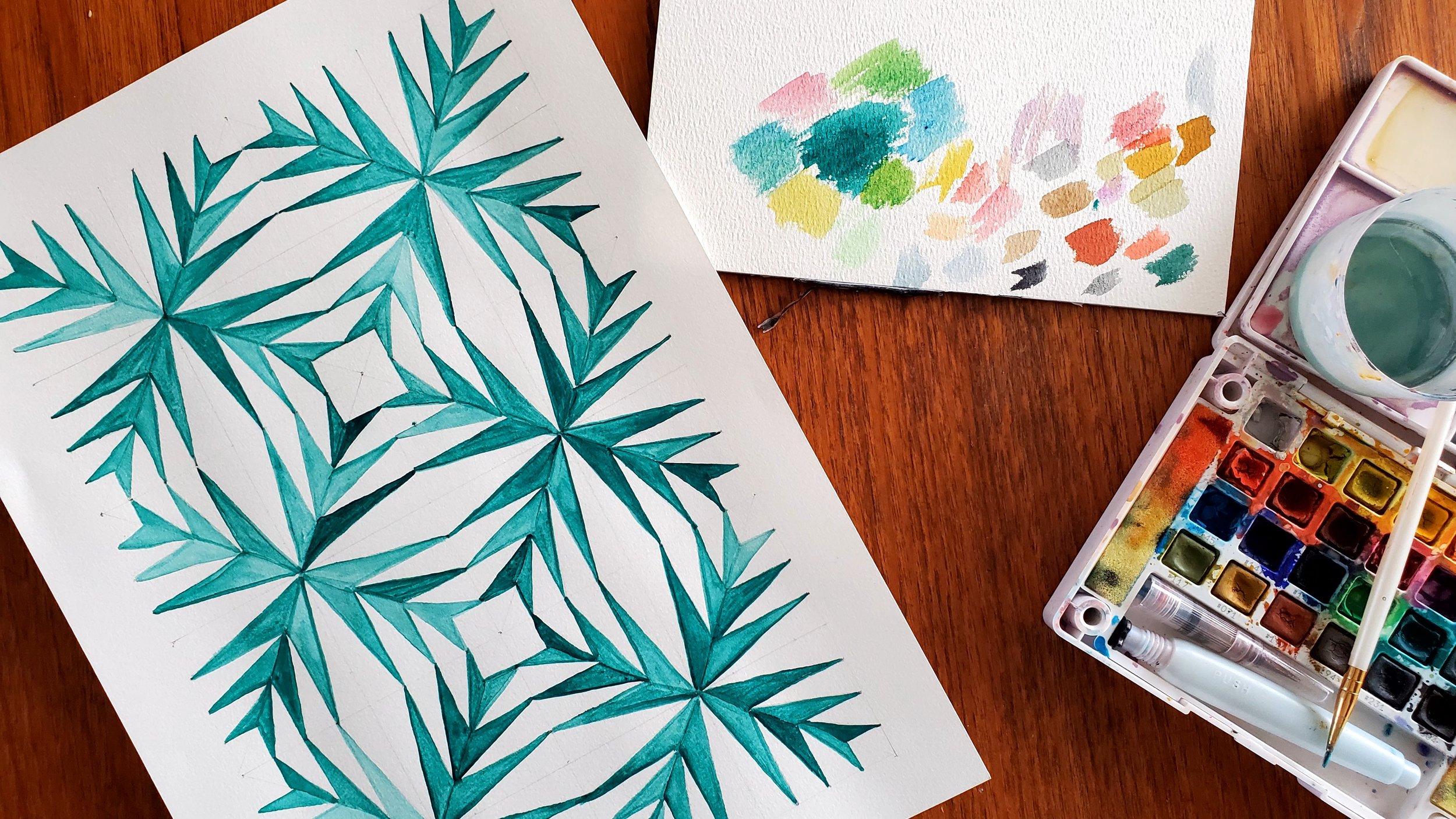Frankly, I can’t believe it’s taken me this long to try my hand at the classic red and black Ukrainian embroidery. A first generation Canadian on my Dad’s side with a Baba (grandmother) who never spoke English and spent her summers gardening and winters with a needle, I honestly never felt the need. I mean, we have oodles and oodles of her stitching in our homes. And that doesn't count the suitcase full an aunt stole and the probably hundreds of pieces she gave away to churches, family, and friends. (Much like it will be with my quilts when I die.) With the war in Ukraine and some pride in my heritage, plus a desire for some hand stitched over the summer, I decided to pick up the floss.
For patterns I dug into my stash of supplies I have from my Baba - books, papers, and patterns. I recognized pieces and fondly recalled the decoration she would make for our blouses in Ukrainian dance. All patterns, no instructions. Without her here to guide me I turned to the modern teacher: You Tube.
In the end I finished 4 small bits of embroidery. I didn’t set out to ‘make’ anything. For one, I had no idea how long it would take. Two, I figured it would get tedious to do the same repeating pattern for an entire month. And three, I don’t really need more pieces of embroidery in the house. All four pieces could, if I wanted to, be turned into bookmarks.
I found the whole process quite relaxing. Challenging at first, just because of the counting and need to follow patterns. Once you got into a rhythm, though, it became very soothing. I don’t know that I will do it again, but it was special to go back to my heritage this month.
